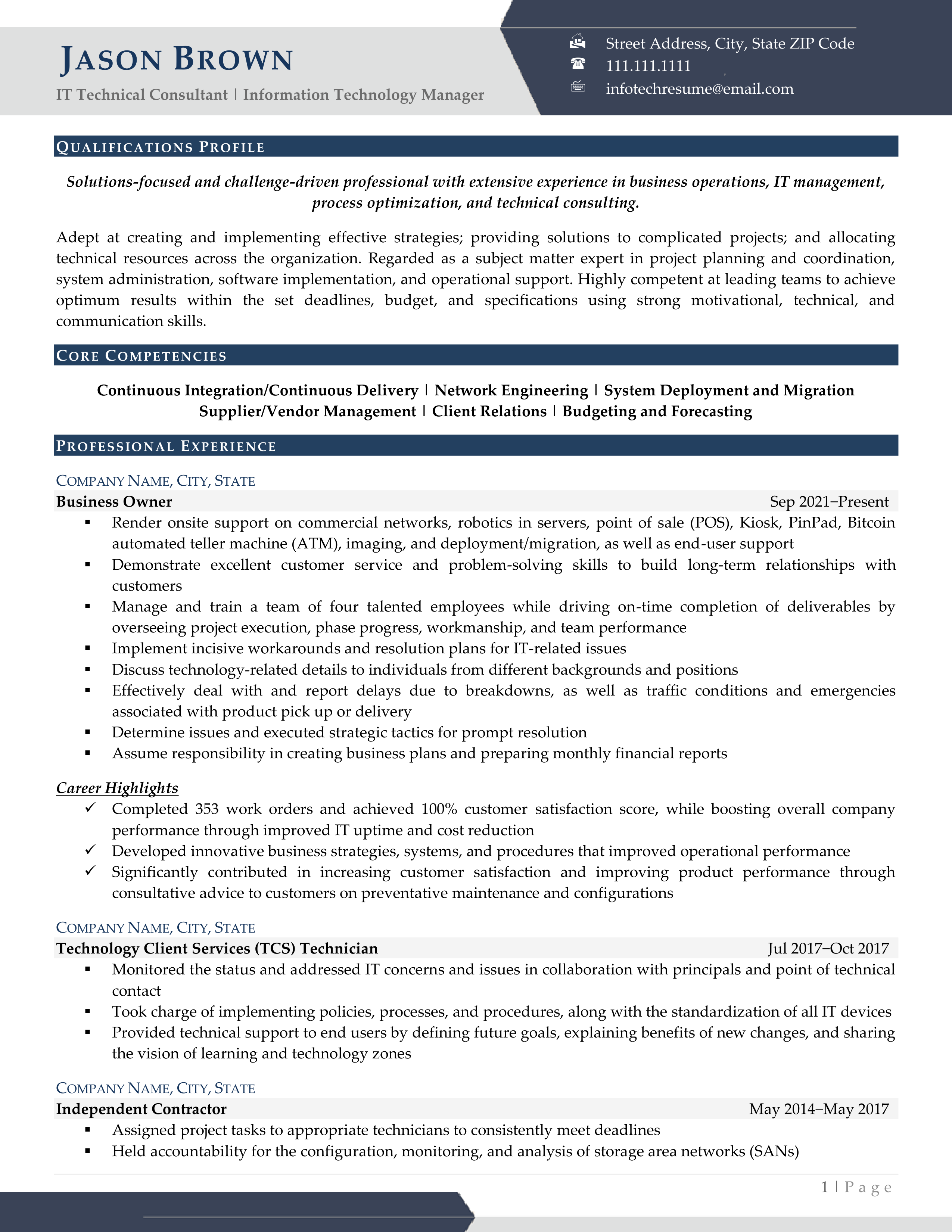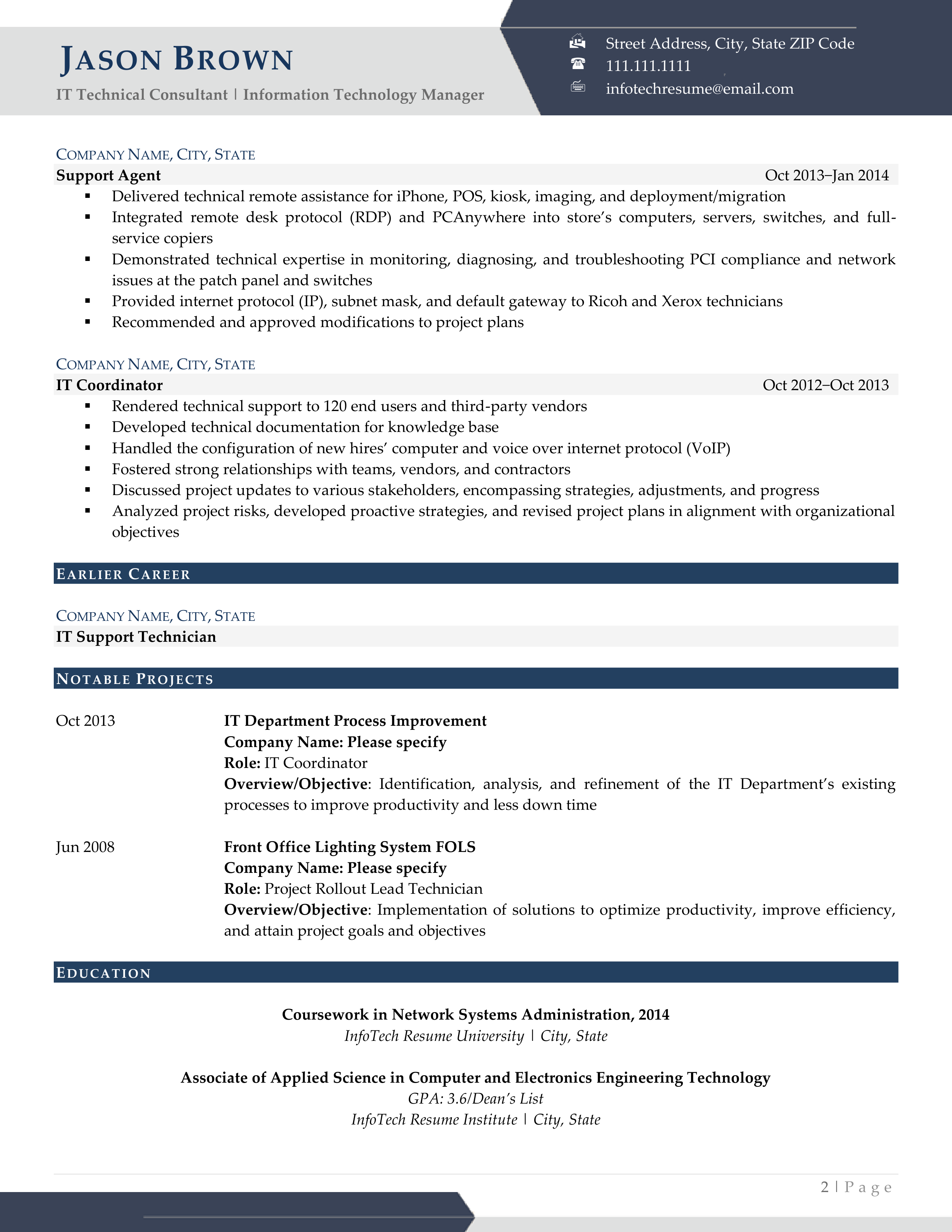Technology keeps advancing, and it will continue to do so. Because of this, companies — both startups and established ones — ride the wave of this innovation. This has paved the way for the increasing demand for tech-savvy professionals. With this, many job hunters seek career opportunities in this sector. If you’re one of them, it’s imperative to have a job-winning IT resume.
Now, to achieve this, you need to be knowledgeable about how you can use your resume as a tool to market your abilities in the job market. If you still don’t know how, you’re on the right page. In this article, we’re going to discuss how to level up your job search game with an IT resume.
Information Technology Career Overview
Before we dive into how to write an IT resume, let’s first discuss the ins and outs of this career. According to the US Bureau of Labor Statistics, employment in computer and information technology occupations is projected to grow by 15% from 2021 to 2031, much faster than the average for all professions.
This figure only proves that the IT job market remains robust, with numerous opportunities across various specializations. Whether you’re interested in software development, cybersecurity, database management, or network administration, the demand for IT talent spans all sectors, from finance and healthcare to entertainment and e-commerce.
What is an IT Professional Resume?
It’s no secret that one of the most pursued professions is information technology. As mentioned earlier, its growth is considered faster than the average jobs. Therefore, to stand a chance in this competitive industry, you need an effectively written IT resume. But what is it really?
An IT resume is a job search document that job seekers use to land a job in the tech industry. It serves as your tool to showcase what you can bring to the table. However, to get results, you must use the resume format that best fits your status. You have three formats to choose from:
1. Chronological resume highlights your work history in reverse chronological order. This format emphasizes your career growth and stability, making it suitable if you have held relevant positions throughout your career.
2. Functional resume lets you focus on your skills and strengths to help you remove the spotlight from your work history for various reasons, such as employment gaps.
3. Combination resume balances both chronological work history and skills-based sections. This focuses on your expertise while also detailing your professional progression.

What to Include in an IT Professional Resume
Some of the most critical skills in the tech field are attention to detail, innovation, and creativity. Hence, make these competencies evident in your job search tools and overall job application. To aid you in writing your IT resume, here are the essential sections you need to include.
Contact Details
Include your name, email, phone number, and website if you have one. This information is needed so hiring managers can contact you in case you’re up for an interview. Thus, you need to make sure that all your details are correct.
Summary or Objective
It’s a short description of your career objectives and the value you bring as an IT expert. Writing a compelling summary allows hiring managers to get a glimpse of your qualities and whether you’re fit for the role.
Work Experience
Nothing beats a professional with relevant work experience. Hence, for those who have worked in the IT industry or a similar field, highlighting it is advantageous. For entry-level candidates, you can skill impress recruiters by putting emphasis on your internship experience and transferable skills.
Education
Another important piece of information that recruiters consider when hiring is the applicant’s educational background. This helps you communicate your expertise in information technology learned from your formative years.
Training and Certifications
It’s a plus to mention courses or training programs you’ve attended to better master your IT skills, such as Cisco Certified Network Professional (CCNP), Certified Cloud Security Professional (CCSP), and Microsoft Certified Azure Solutions Architect Expert.
Skills
Create a Skills section that focuses on your technical competencies and soft skills, which we’ll cover in the next part.

Top Skills to Include in an IT Resume
Given the competitive market, you need to ensure your resume stands out. That being said, including your relevant skills on your IT resume is paramount. This is because strategically outlining your expertise helps you communicate why you’re the best fit for the position.
Hard Skills and Computer Skills
- Programming languages (Java, Python, C++)
- Network administration and security
- Database management (SQL, NoSQL)
- Cloud architecture
- DevOps tools (e.g., Jenkins, Docker, Kubernetes)
- Systems integration
- Operating systems (Windows, Linux, macOS)
- Systems and server administration
- Cybersecurity and threat analysis
- Cloud computing (AWS, Azure, Google Cloud)
- Web development and design
- IT project management
- Enterprise Resource Planning (ERP) software
- Virtualization platforms (VMware, VirtualBox)
Soft Skills
- Problem-solving
- Communication
- Team collaboration
- Critical thinking
- Adaptability
- Attention to detail
- Time management
- Customer service

How to Write an Effective IT Resume
Your resume is more than just a document; it’s your personal marketing pitch and your chance to stand out in a competitive field. To guide you, here are some tips on how to write an IT resume.
1. Choose the best format and use a simple layout.
Based on your career level, choose the format that best applies to you. Then, make sure it’s easy to read and has a simple layout. Use bullet points, headers, and consistent formatting for a professional look.
2. Use targeted keywords.
Incorporate relevant keywords like “IT professional,” “network administrator,” or “software developer” to optimize your resume for search engines.
3. Showcase your IT experience.
Your work experience section is the heart of your IT resume. List your previous roles, if any, and use specific metrics to highlight your accomplishments. Whenever possible, use specific numbers to showcase your accomplishments. For instance, mention how you improved system efficiency by X%, reduced network downtime, or successfully completed projects on time and under budget.
4. Highlight your skills.
Your skills section is where you demonstrate your technical acumen and versatility. As noted above, divide it into two categories: hard skills and technical proficiencies and soft skills.
5. Include certifications.
Draw attention to your certifications because they demonstrate your commitment to staying up-to-date in the IT field.
6. Tailor your resume.
Customize your resume for each job application by aligning your qualifications with the specific job requirements.
7. Proofread your resume before sending your application.
Ensure your resume is error-free and easy to read. Remember, errors can tarnish your professional image. Therefore, proofread meticulously for grammar and spelling. Also, check if your details, especially contact info, are correct.
8. Include a cover letter.
Craft a compelling cover letter that complements your IT resume. This allows you to further explain why you’re the ideal fit for the position.
IT Resume Example
To paint a picture of how to effectively highlight your work experience, accomplishments, and skills on your job search tool, here’s an example to guide you.


Don’t Leave Your Career to Chance; Hire IT Resume Writers
Regardless if you’re already a seasoned IT professional looking to take their career to the next level or a fresh grad looking to get their foot in the door, creating an impressive IT resume is essential for securing your dream job in today’s tech-driven world. Moreover, your IT resume is your ticket to an exciting profession in the technology industry, so make it shine, and watch the opportunities roll in.
What now? Fortunately, you can ensure that your resume reflects your skills, experiences, and aspirations accurately with our expertise. Let’s work together to craft a resume that not only impresses employers but also opens doors to exciting opportunities in the ever-evolving world of IT. Contact us today to embark on this transformative journey to IT career success!





